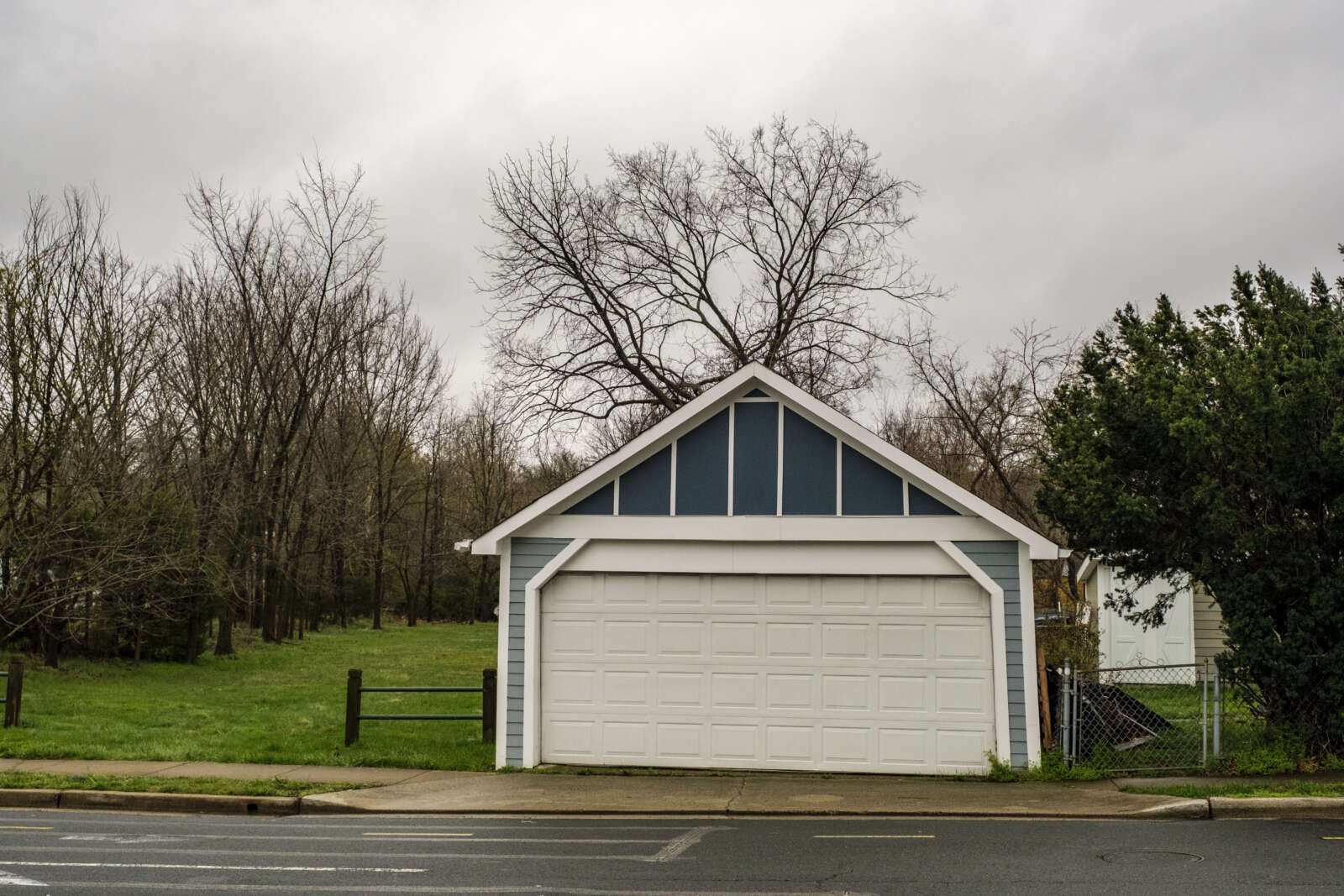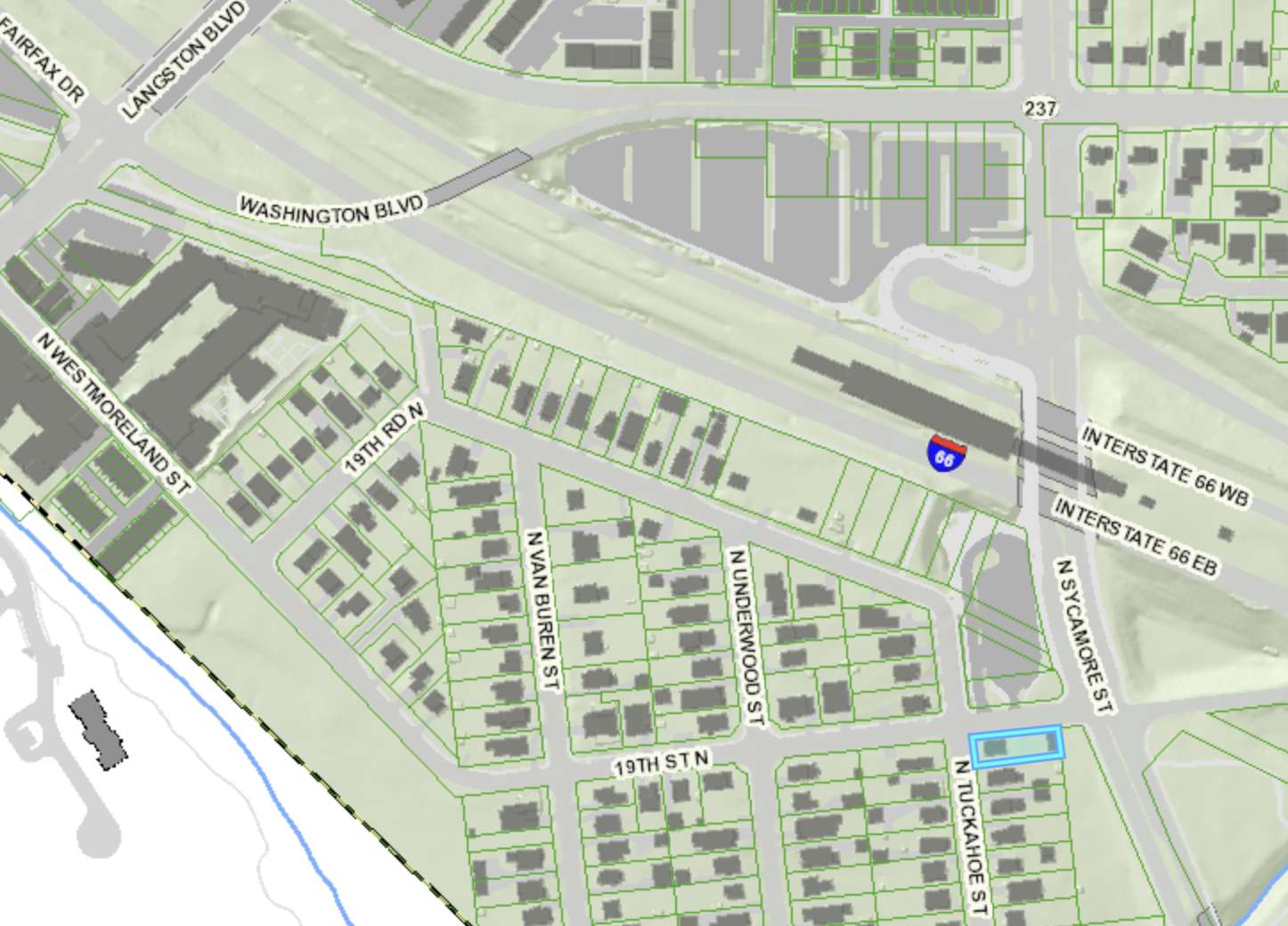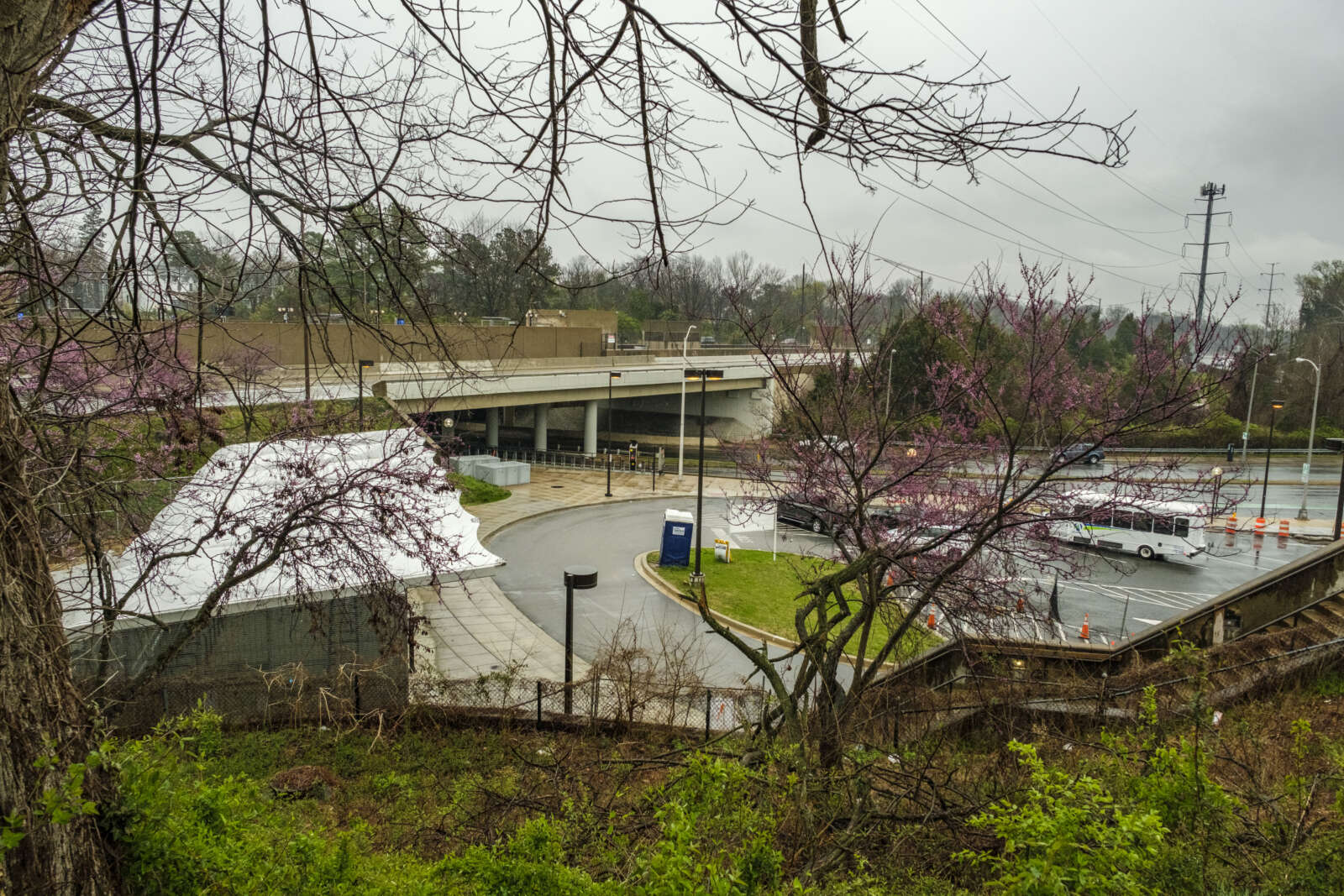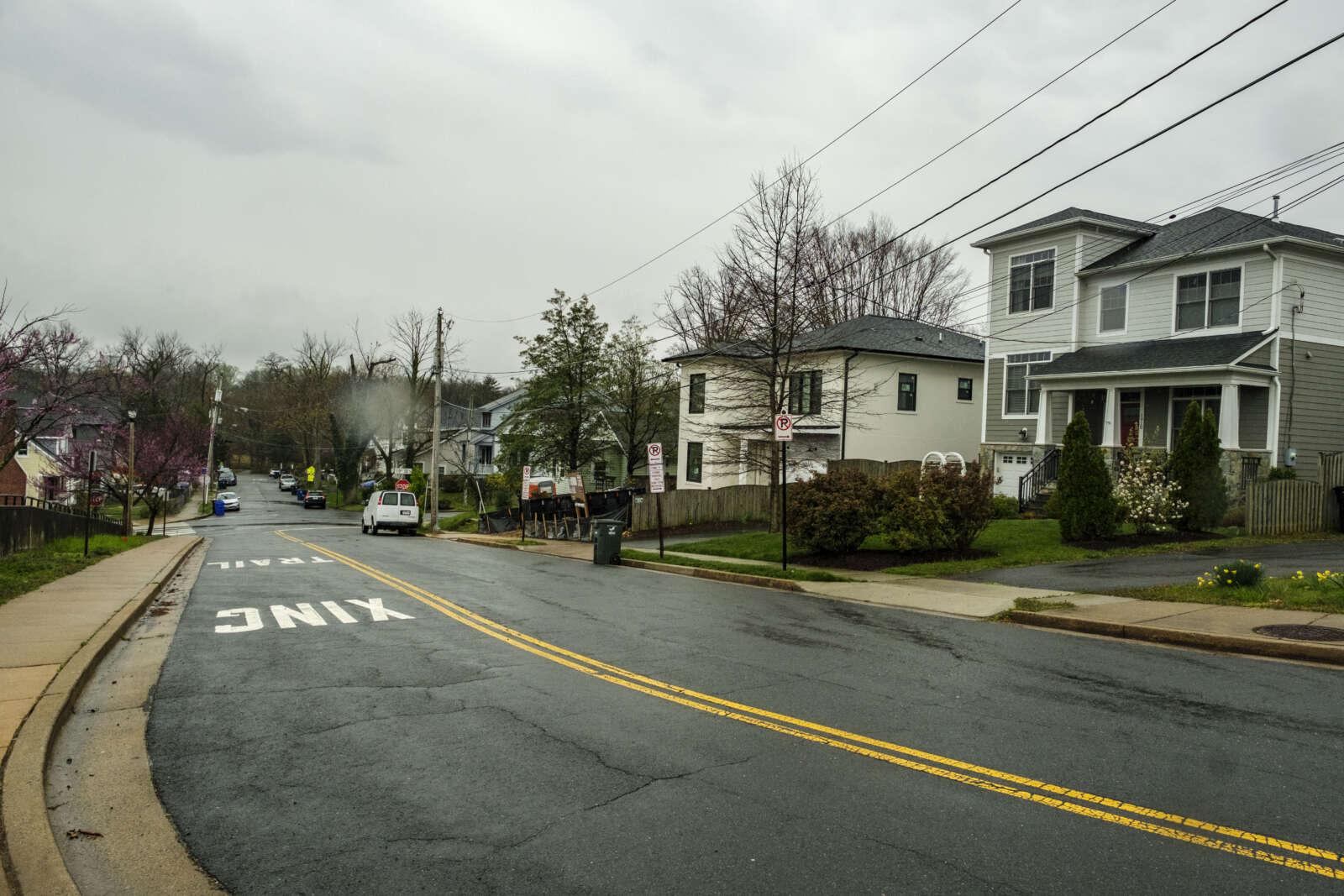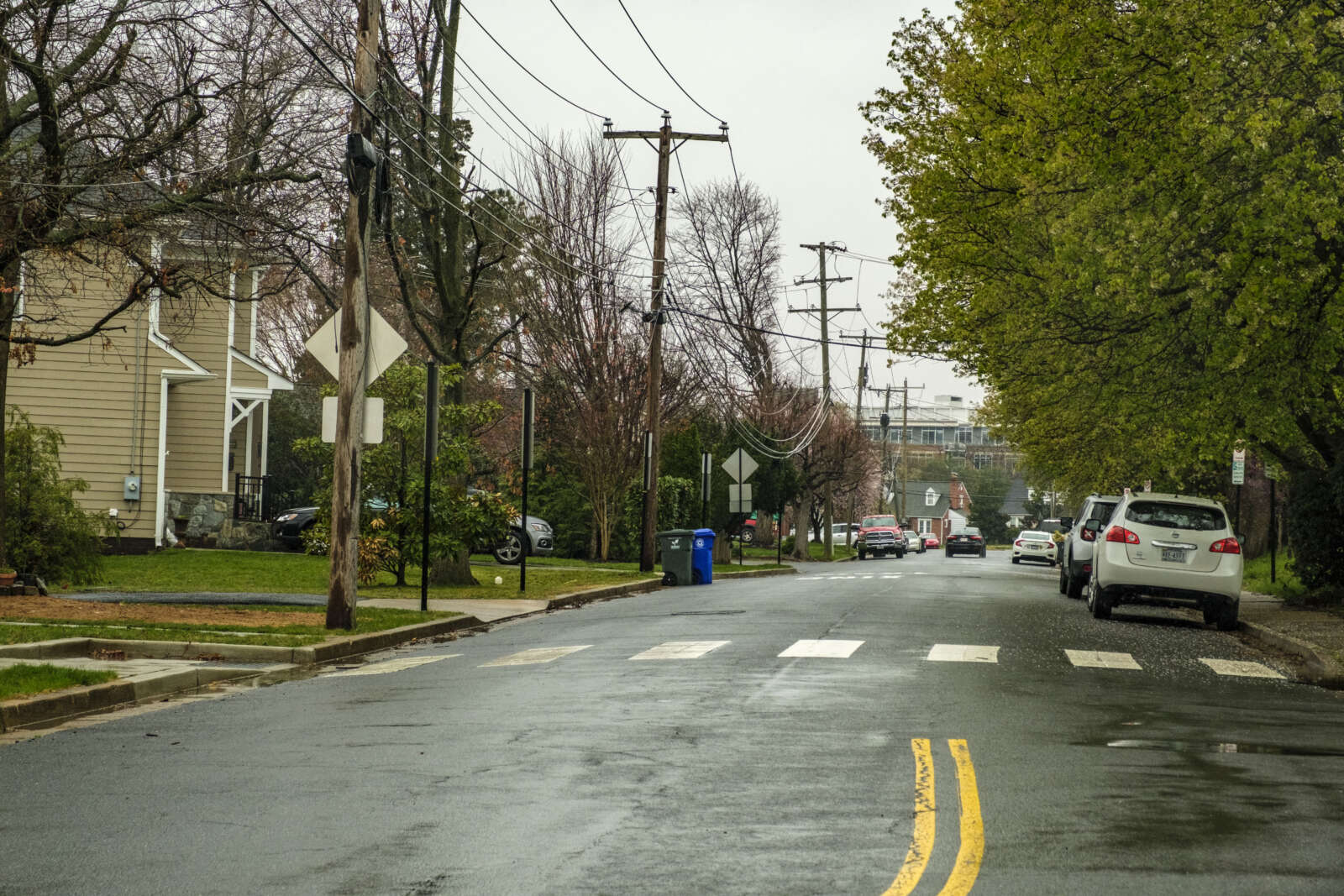A detached garage stands just across the street from the East Falls Church Metro station and a stone’s throw from an I-66 entrance and the Washington & Old Dominion Trail.
Elsewhere in the county, developers would be champing at the bit to turn this transit-accessible carport into an apartment building with ground-floor retail.
Instead, the garage prevails as just one example of prime real estate near the station that could support the walkable development some residents and county leaders have envisioned there, but which has yet to materialize. (The garage is on a parcel zoned only for single-family homes, preventing such development.)
Arlington has encouraged transit-oriented growth along other Metro corridors and is even seeing it along Columbia Pike, where affordable prices and the form-based code are driving and guiding significant redevelopment, connected by bus but not by rail — and only sporadically by trail.
The lingering presence of the garage — and the continued teardowns of older homes to make way for larger single-family homes, just a block or two from the station — encapsulates how little the East Falls Church Metro-area landscape has changed, despite a plan approved in 2011 to guide future development, the opening of the Silver Line to Tysons and Reston, and the billions invested in the Metrorail system each year.
There is little evidence here of the transit-oriented development, known as “smart growth,” that has borne fruit elsewhere in Arlington, save perhaps a single block of N. Westmoreland Street featuring newer apartment buildings and some hip restaurants, a bookstore and a barre studio. (The block is located between a self-storage facility and a quiet neighborhood of single-family homes, which stands between it and the Metro station.)
After a decade of being focused on other pursuits near the station, like a $2 million bike facility and bus bay expansions, Arlington County and the Washington Metropolitan Area Transit Authority are taking a second look at the 2011 plan and how it could be updated to encourage transportation and public space improvements.
This work is happening as the county wades deeper into an effort to plan future development along Langston Blvd, which runs right by the station.
Ultimately, these planning efforts will still hinge on developers pitching projects.
“There’s got to be an incentive for there to be redevelopment and improvements to the corridor,” says Natasha Alfonso, a county planner. “We’re going to be relying on the private sector to achieve improvements to this corridor… There’s just a lot and the county doesn’t have money to pay for all that.”
Hurdles to redevelopment
Currently, there are a host of obstacles to transit-oriented development near the station, according to WMATA spokesman Ian Jannetta.
One of the chief reasons he cited is residential zoning.
The plan approved by the Arlington County Board in 2011 only identified two single-family homes — across the street from the “Kiss and Ride” lot — as slated for potential redevelopment, and emphasized that any such efforts would have to be balanced with “preserving and protecting the nearby existing single-family residential areas.”
Still, it faced strong opposition from some community members who said it encouraged too much development.
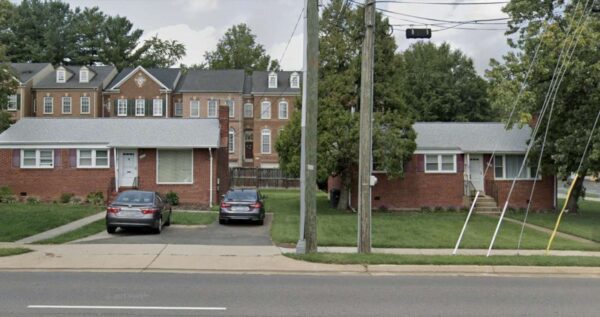
The final report recommended building heights of three to nine stories tall, with shorter buildings easing the transition to existing residences from taller buildings near I-66 and other locations “where they will have a minimal impact on surrounding single-family areas.”
One prime development location that isn’t protected by residential zoning is a commuter parking lot on the northern side of I-66.
The portion bordering I-66, where buildings could be tallest, is owned by the Virginia Department of Transportation, and the parcel nearer to the residences across the street, where apartments would taper down, is owned by Metro.
Alfonso says it would be ideal for affordable housing, as it is so close to transit and would add affordable units in North Arlington. But the project would likely need to be denser than the 2011 plan allows in order for such a project to be cost-effective.
“The challenge is with single-family edges to the east and north,” Alfonso said. “[We] need further conversations with the community to see what they can tolerate.”
The split-ownership of this lot is another hurdle to development. VDOT says WMATA would have to purchase the portion it owns and Jannetta says the Metro authority would have to relocate the commuter parking lot, which would be expensive.
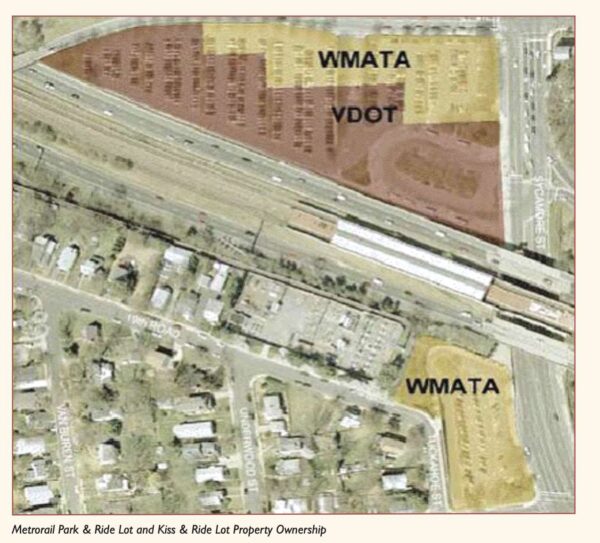
VDOT confirmed Metro has not made any moves to purchase this land, but staff “will continue to coordinate with Arlington County and WMATA” regarding potential development on the parcel, says Kathleen Leonard, a spokeswoman for state transportation authority.
Janetta added that, to his knowledge, no developers have discussed with WMATA plans to build near the Metro station.
Beyond the parking lot, other redevelopment opportunities involve nearby businesses, such as the Suntrust Bank site, which was razed and replaced with townhouses.
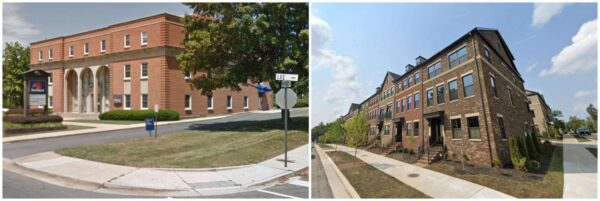
But market conditions have changed and costs have increased since 2011. Without taller heights, redevelopment may not be worth a company’s while, says Alfonso.
Now, developers would have to acquire the land, which is expensive, and buy out income-generating businesses, such as CubeSmart Self Storage facility, built in the mid-2010s, or the Exxon gas station. The latter — which the 2011 plan envisions becoming a five-story, mixed-use office, residential or hotel development — would require significant remediation to meet environmental standards.
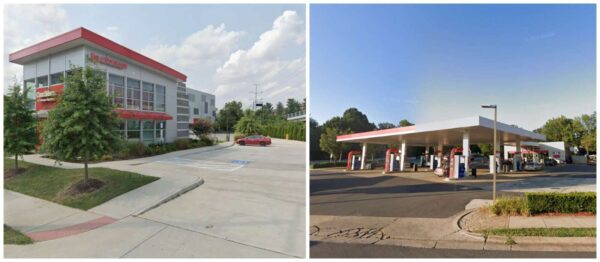
“Those costs are real,” Alfonso said. “There has to be enough density to justify that kind of improvement on those sites. If the community wants walkable, transit-oriented development, those are things we have to consider.”
What is happening right now
Instead of redeveloping the commuter lot, WMATA has focused on relatively minor improvements, including upgrades to the bus bays. The forthcoming project is intended to allow for more regional bus routes, reduce traffic jams and make walking from the park-and-ride lot safer.
“In the time since, most of the focus has been on raising funds for improvements to the bus facilities, which has been led and secured by the County,” Jannetta said. “WMATA is working with the County to hold a Compact public hearing on that project design later this summer.”
Additionally, the Plan Langston Blvd initiative, which touches on development in this neighborhood, is entering its third year. County staff are preparing a preliminary concept plan that they intend to present this spring.
As part of this work, the county will be looking at how updates to the 2011 plan could facilitate open space and transportation improvements to East Falls Church.
“We are working with the County and their Plan Langston Blvd effort to resolve issues identified in the 2011 report that impact the site’s development potential,” Jannetta said.
The topics of land use and heights could be discussed after the County Board adopts a final Plan Langston Blvd document.
“There are many who have said we need to revisit height, density — the whole plan,” Alfonso said. “The County Board has to give us the go-ahead. At the moment we haven’t been given direction which way to go.”


